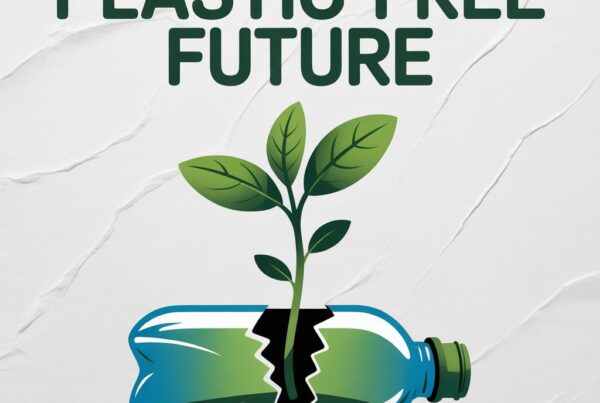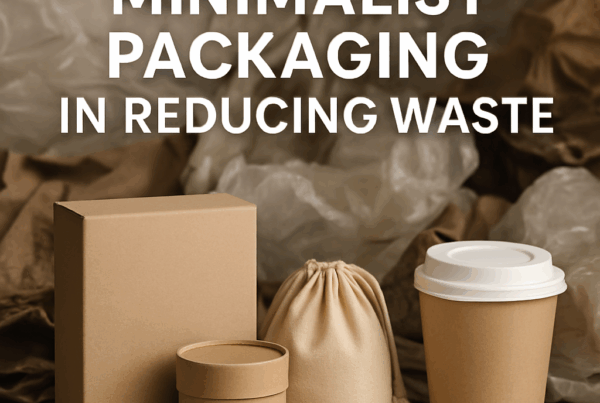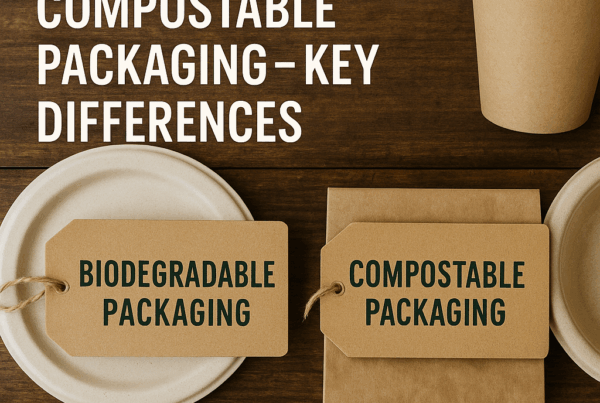Recycled Packaging?
As sustainability becomes a business imperative, more companies are rethinking their packaging. One clear solution is recycled packaging. From global fashion houses to local food producers, brands are now using recycled materials to improve sustainability, reduce carbon footprints, and meet growing consumer demand for eco-friendly practices.
In this post, we’ll explore how recycled packaging is helping brands reach their sustainability goals. Moreover, we’ll look at why it’s becoming a competitive advantage in 2025 and beyond.
Why Recycled Packaging Matters?
The Environmental Impact of Traditional Packaging
Traditional packaging—often made from virgin plastics or non-renewable resources—has long contributed to landfill overflow, ocean pollution, and greenhouse gas emissions. As a result, businesses are facing increasing pressure to adopt greener alternatives.
According to the Environmental Protection Agency (EPA), packaging accounts for over 28% of municipal solid waste globally. Clearly, there’s an urgent need for more sustainable packaging solutions.
The Benefits of Recycled Packaging
Recycled packaging significantly reduces the environmental burden.
-
Firstly, less energy is used in production compared to virgin materials.
-
Secondly, it results in lower CO₂ emissions, helping brands reduce their carbon footprint.
-
Additionally, it reduces landfill waste and supports a circular economy.
-
Most importantly, it meets consumer demand for sustainable products.
By using recycled materials, brands are actively contributing to waste reduction and responsible resource use.
How Top Brands Are Using Recycled Packaging
Adidas: Turning Ocean Plastic into Packaging
Adidas has taken bold steps in sustainability by using Parley Ocean Plastic in both products and packaging. This initiative intercepts plastic waste from beaches and coastal communities and transforms it into reusable materials. Their packaging redesign has saved millions of plastic bags annually.
Coca-Cola: 100% Recycled PET Bottles
Coca-Cola launched 100% recycled PET (rPET) bottles in multiple markets, helping the brand reduce its virgin plastic usage. By using rPET, Coca-Cola has cut greenhouse gas emissions by up to 30% per bottle, according to their sustainability reports.
Lush Cosmetics: Closed-Loop Packaging
Lush offers in-store recycling where customers return used containers. These are then washed, remoulded, and reused to create new packaging—making it one of the few brands with a closed-loop system in place.
Patagonia: Packaging with Purpose
Outdoor brand Patagonia uses 100% recycled polybags and encourages minimal packaging with a clear message: reduce, reuse, and recycle. Even hangtags and labels are made from post-consumer recycled content.
Key Materials Used in Recycled Packaging
-
Brands are now using a wide variety of recycled materials, including:
-
rPET (Recycled polyethylene terephthalate): Commonly used for bottles and containers.
-
Post-consumer recycled paper/cardboard: Used in mailers, product boxes, and labels.
-
Recycled aluminum: Ideal for cans, tins, and tubes.
-
Bioplastics from recycled food waste: An innovative and biodegradable alternative.
These materials reduce demand for virgin resources and often come with lower lifecycle emissions.
-
Consumer Preferences Are Shifting
Despite the benefits brands will face some hurdles:
-
Supply limitations: Recycled materials are in high demand, causing shortages.
-
Quality variability: Some recycled materials may not meet product integrity standards.
-
Cost concerns: Prices can be higher than traditional materials, although this is shifting as demand grows.
Still, many businesses are overcoming these challenges through strategic sourcing and innovation partnerships.
According to a 2024 NielsenIQ survey, 73% of consumers say they would change their consumption habits to reduce their environmental impact. Consequently, sustainable packaging is now a key purchasing factor—especially among Millennials and Gen Z.
Therefore, brands that lead with eco-friendly packaging are more likely to build trust and loyalty with their target audience.
How to Start Using Recycled Packaging (For Brands)
For businesses looking to make the switch, here are practical steps:
-
Conduct a packaging audit
Identify which packaging components can be replaced with recycled alternatives. -
Partner with certified suppliers
Work with vendors that can verify material sourcing and sustainability practices. -
Educate your team and customers
Clear messaging on packaging can boost awareness and reinforce brand values. -
Invest in design for recyclability
Use mono-materials and avoid mixed packaging that’s hard to recycle. -
Measure impact
Track waste reduction, emissions saved, and customer response to improve your strategy.
What’s Next: The Future of Recycled Packaging
The next evolution in recycled packaging includes:
-
Smart packaging that tracks recycling data via QR codes.
-
AI-driven design to minimize waste and optimize material use.
-
Advanced recycling technologies such as chemical recycling and expanding what materials can be reused.
Brands that embrace recycled packaging today will not only help the planet but also future-proof their businesses.
Final Thoughts
Using recycled packaging is no longer just a sustainability trend—it’s a smart business strategy.
In conclusion, brands that lead the way in responsible packaging build trust, gain loyal customers and reduce their environmental impact. As more companies align with circular economy principles, recycled packaging will be at the heart of eco-conscious branding.
Ready to Switch to Recycled Packaging?
Let us help you create packaging that protects your product and the planet. Contact our sustainable design experts →


